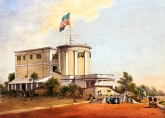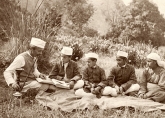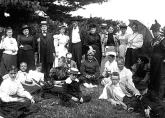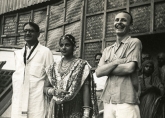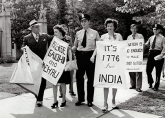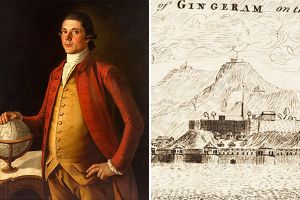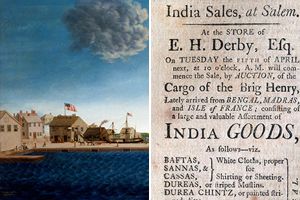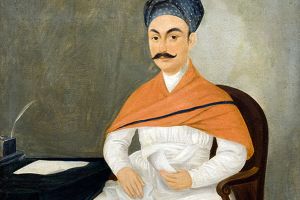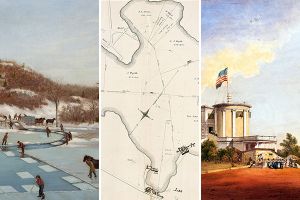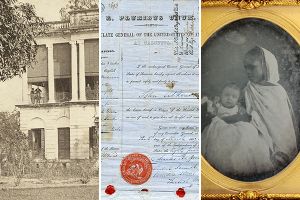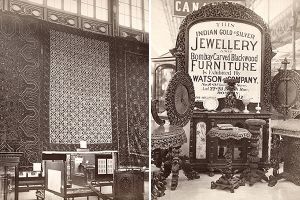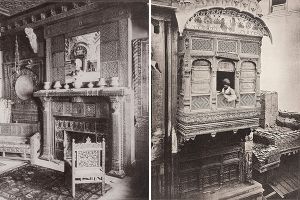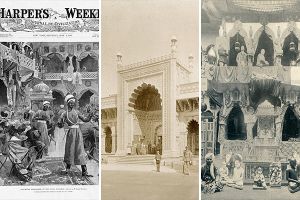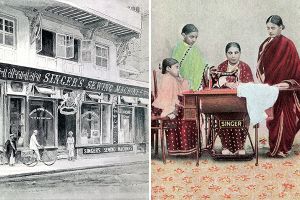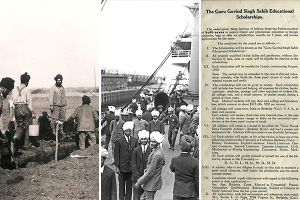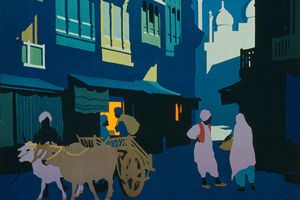Searching for Opportunity
Soon after the United States won its war of independence, American private merchants were freed from British restrictions on trade and could send ships to India. Merchant mariners from eastern ports, including Baltimore, Boston, Philadelphia, New York, and Salem, set sail to purchase goods directly from India, especially cotton and silk textiles, sugar, ginger, and raw materials. They offered silver or bills of exchange and brought a few commodities that were marketable in India – lumber, naval stores, and even wines purchased en route. These merchants also took part in the profitable business of carrying freight between ports in Asia. Some, like Benjamin Carpenter, made detailed notes and drawings to guide those who would follow.
In India, Americans preferred to avoid British middlemen and instead dealt with Indian commercial agents. The relationships they established with these merchants provided valuable opportunities to learn first-hand about the places and people they encountered. In Bombay, for example, Nusserwanjee Maneckjee Wadia, a specialist in the American market, handled the business of George Nichols from Salem. The two men became friends, exchanging gifts of Kashmiri shawls and books on navigation. Wadia supplied a fine striped-muslin fabric for the wedding gown of Nichols’ bride-to-be.
After 1816, as the United States began to mechanize textile production, owners of these nascent industries lobbied lawmakers for restrictions on foreign imports. Consequently, the trade with India shifted from textiles toward raw materials, such as hides, jute, indigo, and linseed. As the U.S. economy expanded, the prominence of the India trade receded. Nevertheless, American entrepreneurs continued to look for business opportunities. From the 1830s to the 1860s, cargoes of ice from New England gained popularity. Ice houses were built in Madras, Calcutta, and Bombay to store frozen blocks of water sent, ingeniously insulated, in ships by Boston’s Frederic Tudor. Other determined American traders, including John Atkinson, relocated to Calcutta to closely manage their commercial interests.
Art wares from India were featured at the popular world fairs that became a fixture of American life. In the 1880s, Lockwood de Forest, mindful of the growing fashion for handmade imports, collaborated with Muggeunbhai Hutheesing to craft fine furniture and interior decorations in Ahmedabad for homes in the United States. At the 1893 World’s Columbian Exposition in Chicago, a presentation of Indian products and art enticed Americans into a setting of oriental splendor, where they could also enjoy a cup of tea served by turbaned Indian waiters.
The end of the nineteenth century marked the first major wave of Indian immigrants to the United States – mostly Sikhs from Punjab who settled along the West Coast. Many began as laborers and went on to succeed as commercial farmers, or started restaurants and businesses selling curiosities from India. Despite initial hardships, including hostile responses to their settlement, they became stalwarts of the American scene, forging a place for Indian heritage within American culture.
